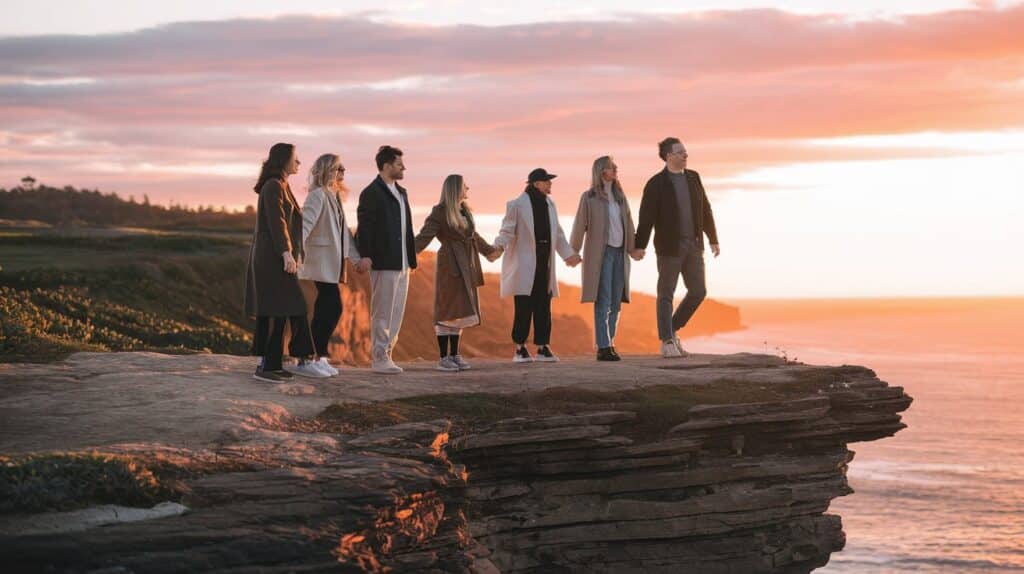In the world of social media, influencers are more than just online personalities—they’re trendsetters, tastemakers, and, in some cases, controversial figures. As they rise to fame, some influencers engage in behaviors that shock, entertain, and sometimes horrify their audiences. This phenomenon, known as “influencers gone wild,” has turned into a viral trend. But why does it happen, and how does it impact social media culture? In this article, we’ll explore the darker side of influencer culture, its impact on audiences, and what it means for the future of influencer marketing.
The Rise of the Influencer Culture
Influencer Definition & Evolution
An influencer is someone who has built a following on social media by sharing authentic, relatable, or aspirational content. Initially, influencers were often experts in a niche, but as their influence grew, so did the stakes. Today, influencers range from macro to nano influencers, each playing a role in shaping consumer behavior and social trends.
| Influencer Tier | Follower Count | Description |
| Nano | <10,000 | Known for niche influence, often deeply connected to their audience. |
| Micro | 10,000–50,000 | Trusted within specific industries, with highly engaged followers. |
| Macro | 50,000–1M | Major reach and influence across broader audiences. |
| Mega (Celebrity) | 1M+ | Massive reach; may lack the niche intimacy but have mainstream appeal. |
Key Platforms for Influencers
Platforms like Instagram, TikTok, and YouTube serve as the primary stages for influencers. These platforms amplify the influence of viral trends, where influencers’ actions—good or wild—gain immediate attention, often becoming global phenomena overnight.
Influence & Power
Influencers today are not only shaping trends; they’re reshaping social norms and introducing audiences to new products, lifestyles, and ideologies. Their endorsements affect brands, and their actions can either strengthen or damage their own reputations—and those of brands they partner with.
What Does “Gone Wild” Mean?
Defining “Gone Wild” in Influencer Culture
“Gone wild” represents instances where influencers act unpredictably, taking their behavior beyond traditional norms. This could mean public meltdowns, risky stunts, or involvement in scandals that challenge societal standards. Influencers often push boundaries to keep their content fresh and stay relevant, but some take it too far.
Examples of Influencers Gone Wild Moments
- The Jake Paul Scandals: Famous for his outrageous stunts, Jake Paul has sparked controversy with dangerous pranks and legal issues.
- Tana Mongeau’s “TanaCon”: In an attempt to create a fan event rivaling VidCon, Tana Mongeau ended up with a disorganized event, leaving fans disappointed and angry.
Public Response
Public reaction to these incidents is mixed. Some fans are entertained, while others criticize and even “cancel” influencers. However, the allure of witnessing influencers “go wild” has transformed these moments into cultural phenomena that captivate global audiences.
The Cultural Impact of Influencers Gone Wild
Shaping Social Norms
Influencers who push the boundaries can shape social norms and sometimes normalize behavior that might otherwise be considered unacceptable. These actions often blur the line between what is considered private and public, making wild behavior more visible and, in some cases, acceptable.
Public Engagement & Entertainment Value
Why are people so fascinated by these incidents? It’s largely because social media offers a front-row seat to drama. Watching influencers go wild is like tuning into a reality show—viewers are entertained, outraged, and hooked. This voyeuristic appeal is a driving force behind viral trends and increases engagement.
Examples Across Cultures
In the U.S., influencers might act outrageously as a form of personal branding. In contrast, Asian markets, where influencer culture is also significant, often prioritize humility and relatability, highlighting how cultural norms affect influencer behavior.
Business Implications & Monetization
Brand Collaboration Risks
Brands benefit greatly from working with influencers, but the risks are clear. When an influencer “goes wild,” brands face potential backlash. While some companies may benefit from the visibility, others may sever ties to protect their reputation.
Monetization of Viral Content
Many influencers capitalize on controversy by attracting more views and followers, boosting ad revenue and brand partnerships. However, this strategy can backfire, damaging long-term relationships with sponsors.
Successful vs. Failed Partnerships
- Successful: Gucci’s partnership with eccentric influencer Billie Eilish increased brand visibility without harming its reputation.
- Failed: Multiple brands severed ties with Logan Paul after his scandalous content in Japan, highlighting the potential downside of these partnerships.
Controversies & Legal Ramifications
Public & Media Backlash
When influencers engage in wild behavior, they often face criticism from both followers and the media. The “cancel culture” phenomenon plays a role here, as followers hold influencers accountable for their actions.
Legal and Ethical Issues
Influencers must also consider the legal repercussions. Many countries now have regulations requiring transparency around sponsored content, while some behaviors (e.g., harmful stunts) may lead to fines or legal action.
Case Studies
One high-profile example is the FTC’s action against influencers who failed to disclose paid partnerships, underscoring the importance of transparency and ethical behavior in influencer marketing.
The Psychological Side of “Gone Wild” Behavior
Attention-Seeking & Mental Health
Many influencers exhibit attention-seeking behaviors to maintain their relevance, which can sometimes spiral out of control. This drive for validation often fuels “gone wild” moments.
FOMO & Validation
The desire to remain relevant can lead to impulsive decisions, driven by FOMO (Fear of Missing Out) and an ongoing need for validation.
Psychological Consequences
Fame and scrutiny take a toll on mental health, with some influencers experiencing anxiety, depression, and burnout as a result of constant public exposure and criticism.
Audience Engagement—Why Do We Watch?
The Role of Entertainment
Influencers’ wild moments offer a form of escapism and entertainment for viewers, who get to experience the thrill of the unknown without any personal risk.
Curiosity & Social Commentary
This curiosity extends beyond entertainment, as audiences often engage in social commentary, analyzing or judging influencers’ behavior.
Impact on Younger Audiences
Young audiences are especially impressionable, and watching these influencers can shape their understanding of acceptable social behavior.
The Future of Influencers Gone Wild
Emerging Trends
New trends, such as stricter algorithm controls, could limit content that promotes dangerous or controversial behavior.
Algorithm Shifts
Platforms are likely to make adjustments, rewarding authentic and responsible content to promote healthier social media ecosystems.
Impact on the Influencer Industry
As platforms and audiences become more selective, influencers may shift toward more constructive and value-based content.
Navigating the Influencer Landscape
Identifying Authentic Influencers
Brands and followers can prioritize authenticity by researching influencers and aligning with those who promote positive values.
For Brands: Engaging Safely
Brands should ensure they’re aligning with influencers whose behavior reflects their values to avoid potential backlash.
Creating Positive Influence
To promote a healthier social media environment, supporting influencers who focus on positive messaging and engagement is essential.
Regulatory Framework & Future Legislation
Current Regulations
Influencer marketing regulations currently include disclosure requirements for sponsored content, but this area continues to evolve.
Potential Legislative Changes
Countries may introduce stricter regulations, especially if platforms and brands fail to self-regulate.
FAQs
Why do influencers “go wild”?
Influencers often act out to attract attention, stay relevant, and entertain their followers, boosting engagement in the short term.
How does wild behavior affect influencers’ careers?
While it can increase short-term engagement, it usually damages their long-term reputation and brand partnerships.
Conclusion
Influencers have the power to shape trends, set standards, and, occasionally, spark controversy. This darker side of influencer culture reflects the high-stakes world of social media and the constant pressure influencers face to stay relevant. The phenomenon of ‘Influencers Gone Wild’ shows how some push boundaries to grab attention, sometimes with lasting impacts on followers and culture. As this culture evolves, both influencers and audiences must consider the consequences of such behavior. For brands and consumers alike, supporting positive and constructive influencer behavior is a step toward a healthier, more responsible social media landscape.

Adim Smith is an experienced blogger at Match Starz, sharing in-depth insights on celebrities and athletes. With a passion for storytelling, he brings readers closer to the lives and achievements of today’s biggest stars.







